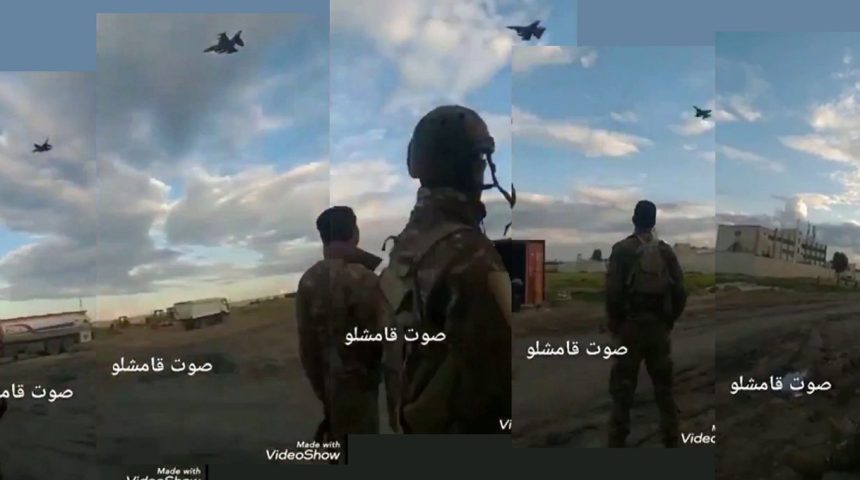A fast and low flyby is a way flex muscles and intimidate those on the ground.
An interesting new clip has emerged from Syria: it shows an F-16 Fighting Falcon (or “Viper”, as the type is dubbed in the fighter pilots community), almost certainly a U.S. one, carrying out a low and fast pass over the northeastern city of Hasakah, where several Islamic State militants had tried to escape from a Syrian prison during what has been called a “detention facility uprising”.
The prison is run by the US-backed Kurdish Syrian Forces (SDF) that said the riot was quelled by Monday Mar. 30 night, more than 24 hours after prisoners inside smashed doors, broke down walls and took over at least one wing of the prison.
Berxwedan jiyane :D pic.twitter.com/x7jMqgossj
— Ernesto Dep☀️ (@zagros8880) March 30, 2020
The video has been geolocated: although the Central Prison is 2 km to the northwest of the place where the video was shot, according to some sources there’s a detention facility in the school building visible in the video where foreign fighters were held.
geolocation of an F-16 flying low level over Hasaka https://t.co/tkB2PaocL1 pic.twitter.com/UbPuWBI48t
— Samir (@obretix) March 30, 2020
Another image taken from another location shows the F-16 releasing flares to counter possible MANPADS (Man Portable Air Defense Systems) IR-guided missiles: this is not a real sign of existing threats detected in the area, as combat aircraft flying inside contested airspace or inside the envelope of shoulder-fired missiles may precautionally release countermeasures
#USA aircraft flying low over the industrial prison in #Hasakah. Local sources say that the #YPG #PKK are still trying to storm the prison and the situation is still not under control. What a memorable scene, PKK cannot control or storm a prison without intense air support.😂🤟 https://t.co/JsRS1wtJvp pic.twitter.com/a7NoI8iokH
— Adam Hasakah (@AdamhasakahAdam) March 30, 2020
Although many consider the low and fast flyby a “show of force” (SOF) is worth remembering that this should be considered a “show of presence” (SOP): the first usually implies the use of weapons or warning gun shots (not directly on the target but in its vicinity), the second is normally carried out to scare someone off with noise. But it’s not a rule:
“For sure, what we can say is that a SOF is called when there is the need for borderline “kinematic” missions that may include release of flares or even warning shots,” says our contributor and combat pilot Alex “Gonzo” Olivares, who’s flown the Tornado in combat. “During a reconnaissance mission over Afghanistan, I was called to carry out an immediate SOP / SOF in favor of some ground troops that were under attack. On that occasion the purpose was to show the insurgents that the troops could have had the support of the air component so we released flares and also used the afterburner.”
“Dealing with SOF/SOP what I can say is that the doctrine is very broad and the way these are performed depend very heavily on the rules of engagement (ROE) of the coalition but also and above all on the scenario: for example the tactics may change if the flyby has to take place as part of a crisis scenario or during peacetime ops. In addition, a Show Of Force is usually ordered to bolster and reassure friendly forces. Moreover these flybys are military in nature but often serve both diplomatic and military purposes: they may even influence other governments or political-military organizations to refrain from belligerent acts.”
Whatever, the purpose is to disperse or intimidate the enemy. These shows are usually carried out by one aircraft, with the other one providing air cover and armed overwatch. The presence of a wingman is important as his/her role is to spot potential threats (for instance the plume of a SAM – Surface to Air Missile) and radio instructions so that the other aircraft, flying low, within the envelope of SAMs, MANPADS and small arms, can visually detect them, release flares and avoid the incoming missile or flak (anti-aircraft fire).









